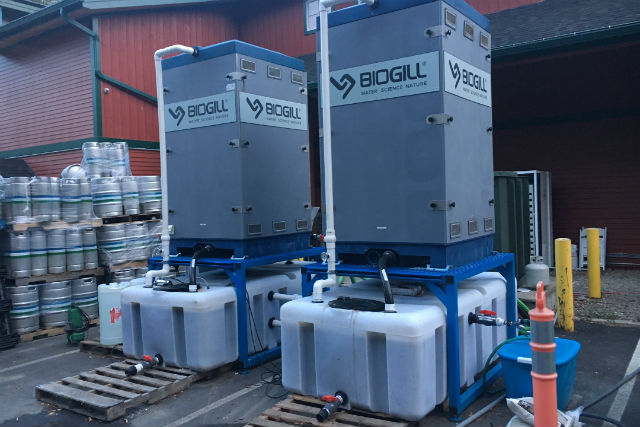
Managing a brewery’s wastewater output can be daunting, but Liz Lette, the International Marketing Manager for Biogill, said from Day 1 a brewery should be thinking of how to prepare to deal with the topic.
The best place for a brewer to start is gathering information and recording data. The key elements to measure are wastewater volumes produced (gallons) per day, pH, solids (TSS – total suspended solids) and biochemical oxygen demand (BOD).
It’s important to understand the local regulations and how rate structures work, as well as what permits may apply to the brewery facility itself.
“Depending on the brewery’s location and where the wastewater is going, there may be restrictions on wastewater discharge flow rate, pH range, daily limits for BOD and TSS, or higher fees that apply to BOD and TSS at levels above those seen in typical household wastewater,” Lette explained, adding that understand your brewery’s own baseline wastewater characteristics is key as well.
Even if onsite wastewater treatment isn’t required when a brewery gets started, it’s an important topic to plan for.
“Limits or fees that don’t apply when a brewery is small might take effect later once brewery production has increased and wastewater volumes reach certain thresholds, which can have a substantial impact on brewery operating costs,” Lette said. “Understanding this from the beginning can allow breweries to plan their wastewater management strategy along with the rest of their growth.”
Wastewater requirements vary by location, so it’s a good idea to include wastewater in site selection considerations and to talk with the local authorities to understand what requirements will apply now and in the future.
“If a sewer connection is not available, wastewater disposal may involve holding and hauling or treating and discharging onsite, so it’s important to evaluate costs and requirements,” she said. “Planned production increases or expansions are another important time to be looking at wastewater requirements.”
It may also be noted that an expansion could trigger the need for a new permit or that the added load on the local sewer system prompts a sudden increase in sewer fees and surcharges — or even a requirement to pre-treat the wastewater to reduce BOD and TSS levels before discharge.
“It’s much better to plan for this than to be surprised by a sudden increase in fees, or even fines,” Lette said.
Environmental stewardship is also an important driver and value for many breweries. Wastewater management is an important element of an overall sustainability strategy surrounding water, energy, and other topics. Planning around these topics can be good not only for the environment, but also the brewery’s bottom line.
Lette will share some tips on how breweries can be proactive with their wastewater management needs later next week.






1 Trackback / Pingback